The elegant hen harrier is perhaps the most iconic bird of prey in the uplands of northern England, but it is also one of the most endangered bird of prey in Britain.
- 10 brutal birds of prey photos and videos that showcase the raw strength and deadly power of Britain’s most formidable hunters
- Birds of prey guide: how to identify UK raptors and where to see them
- What's the most common bird of prey in the UK?
These large raptors wheel and soar above the moorland and, in late spring, perform a spectacular ‘sky dance’, exchanging tokens of their affection in mid-air to cement their bond.
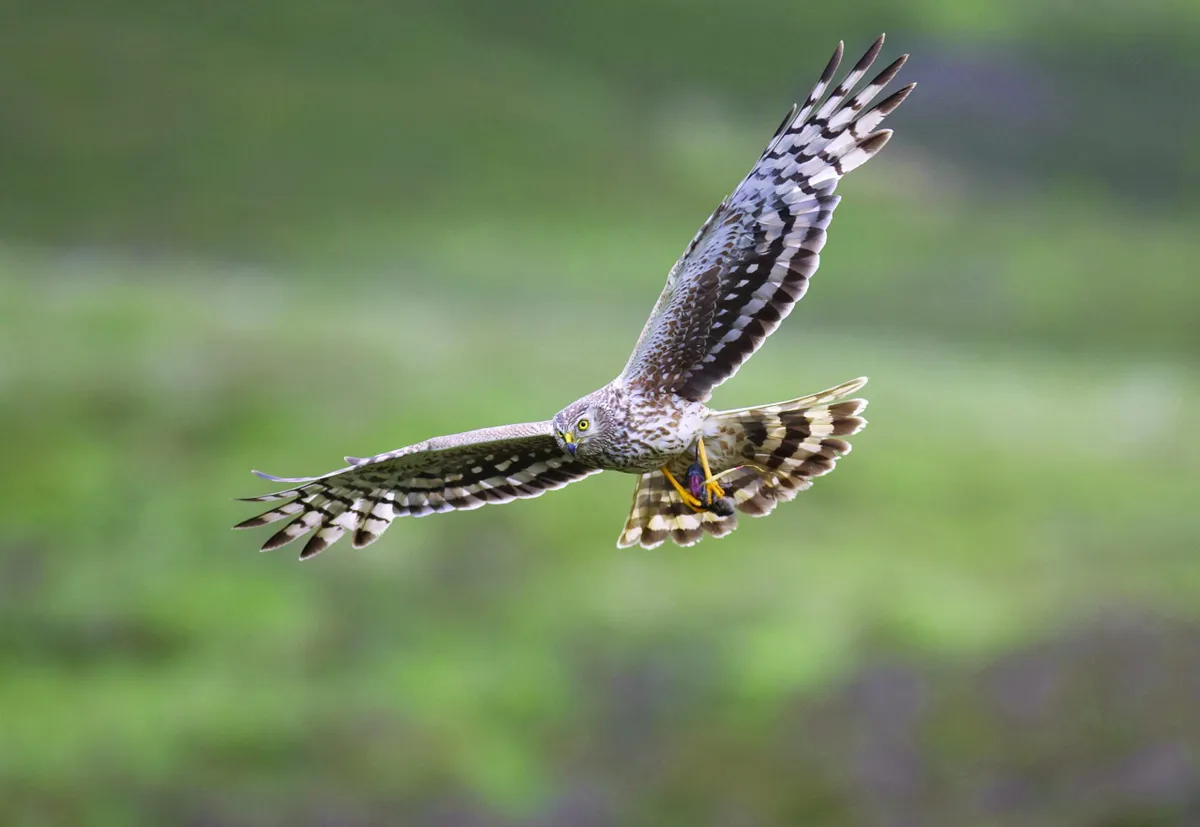
Learn more with our expert guide to hen harriers, including how to identify them, why they are so rare and where you can see them.
What is a hen harrier?
It is a bird of prey that typically nests in mixed heather and grass moorlands. It hunts birds and small mammals by flying slowly and silently just above the vegetation hoping to surprise its prey.
How to identify a hen harrier
Males are a striking pale grey while females are brown but with a distinctive white band on the tail leading to their nickname of ‘ringtails’. The bird is slightly smaller than the more familiar buzzard.
These large (one-metre wingspan) mottled-brown (female) or light grey (male) birds of prey glide and hover over upland moors and pluck meadow pipits or voles from among the heather. Look out for their aerobatic courtship ‘sky dance’ in which birds call and wheel through the air.
Related articles
How big are hen harriers
Hen harriers are between 44-52cm and have a wingspan of between 100-120cm
How fast are hen harriers?
They have a top speed of 38 km/h
How many hen harriers are there in the UK?
The British Trust for Ornithology estimates fewer than 700 pairs in the UK – the species’ strongholds are in Orkney, Shetland, Isle of Man and the north and west of Scotland. There are up to 60 pairs in Wales.
Where do hen harriers live?
The Forest of Bowland in rural Lancashire supports one of the largest populations of hen harriers in England.
Around five per cent of the UK’s harrier population lives on the Isle of Man. The island’s interior of sparsely populated heather-clad hills offers the ideal habitat for the harriers’ principal prey species. Head to Snaefell, Sulby or Kirk Michael to spot harriers.
Most of Scotland’s Hebridean islands support resident populations of hen harrier. Loch Gruinart on Islay, the uplands of Arran and the Isle of Ulva off Mull are promising locations to spot a harrier.
The Antrim hills and lakes of Fermanagh are home to the majority of Northern Ireland’s breeding population of hen harriers. A visit to the RSPB’s Aghatirourke Nature Reserve or Cuilcagh Mountain Park are a good bet for spring sightings.
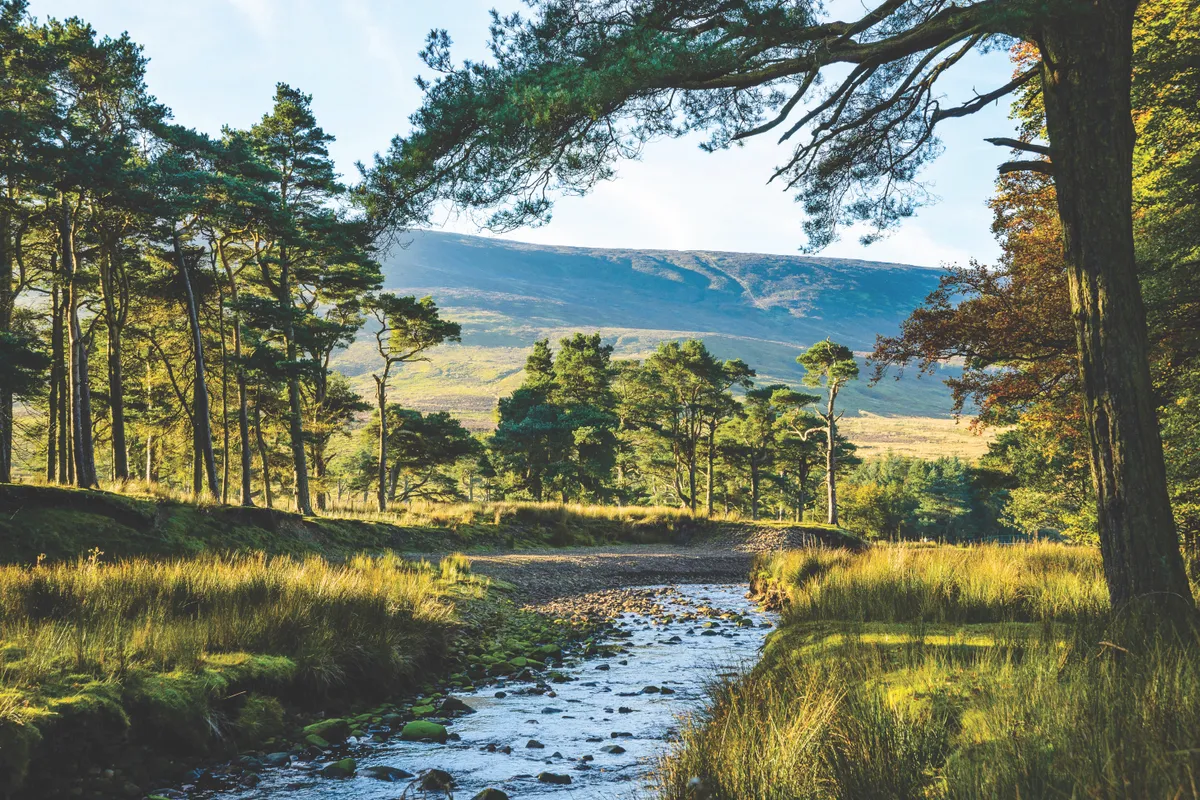
Why is it called a skydancer?
This name comes from the birds’ courtship flight where a male and female swoop, roll and glide in elegant patterns around each other as a preface to forming a bond at the start of the breeding season.
What is the history of hen harriers in Britain – and the cause of their decline?
In the early 1980s, there were more than 30 nesting pairs of harriers across Bowland, forming the backbone of the English harrier population. In some years, this was the only place in England where the birds nested successfully.
“According to Natural England, the bare minimum of birds we should have in Bowland is 12 or 13 pairs, and in the past, the area supported almost three times that number,” says RSPB Bowland Project Officer James Bray. “So currently we have a quarter of the population that the Government is legally obliged to nurture and protect.”
- It is the fastest animal in the world and can catch its prey mid-air in its deadly claws: Meet one of the world's most incredible birds of prey
- It weighs as much as house cat, has a wingspan the size of an average door and can hit 100 miles per hour when hunting - that's one formidable predator
Characterised by increasingly scarce upland peat bog and unenclosed heather-clad moorland riven by steep-sided valleys, this austere landscape is an ideal habitat for voles and small upland birds such as the meadow pipit, which are the harriers’ main sources of food. But harriers will also take the chicks of grouse introduced on to the moors for shooting, bringing them into conflict with gamekeepers and making them the most persecuted bird of prey in Britain.
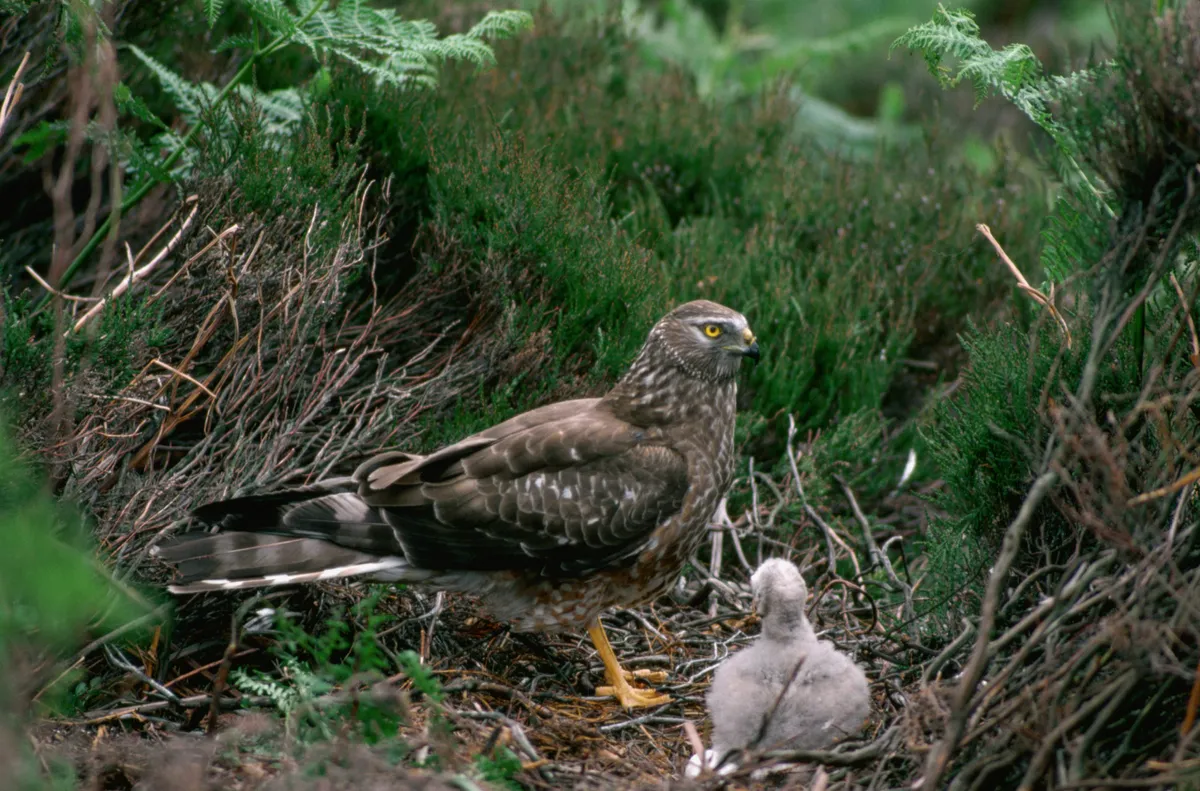
The steep declines witnessed in the middle of the last decade followed the disappearance of four male hen harriers from the Forest of Bowland in 2015. While the female is on the nest, the males do most of the hunting, making them more vulnerable to persecution because they are very obvious in the landscape while hunting food to feed their chicks.
There are other factors at play, too. Heavy spring rainfall can have a huge impact on nesting success, as can fluctuations in the vole population; every so often vole numbers crash, making it difficult for the birds to find enough to eat.
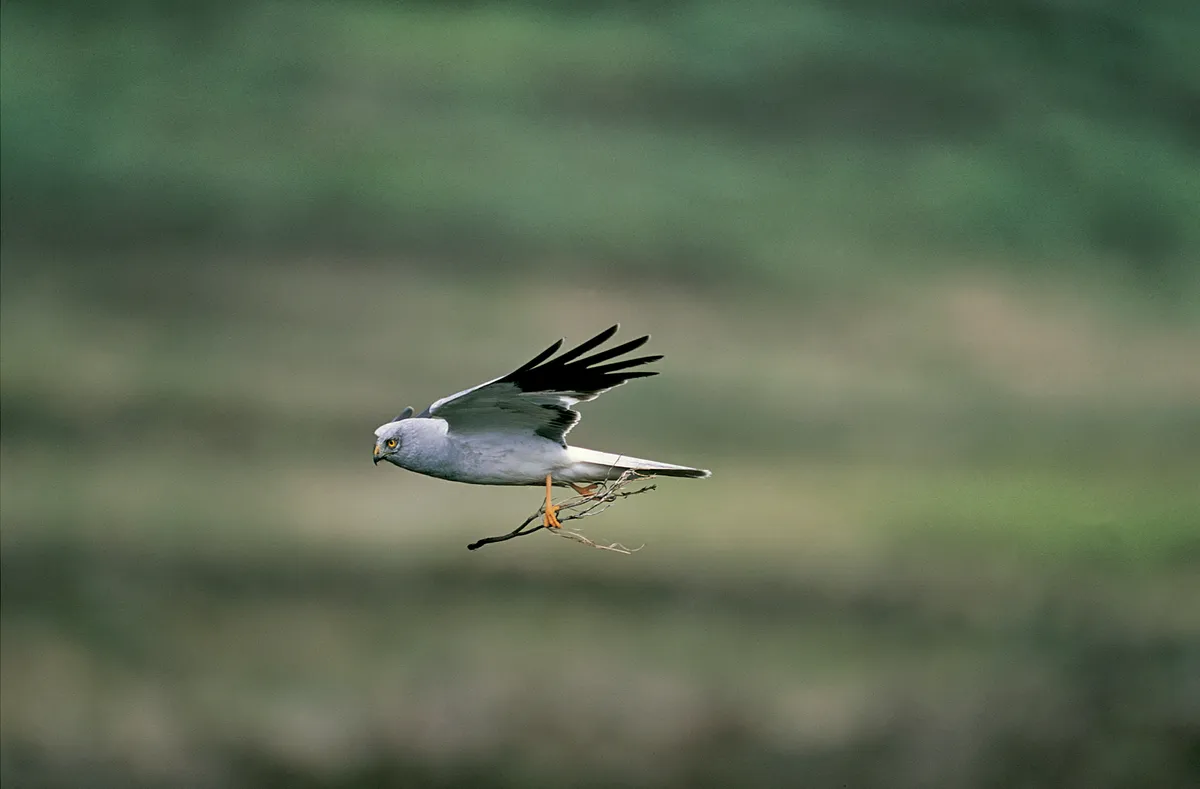
Conservation of hen harriers
In 2015, hen harriers nesting in the Forest of Bowland failed to raise a single chick. The same thing happened the following year. This raised serious concerns about the viability of the Forest of Bowland’s breeding population of harriers – a doubly tragic outcome as this beautiful bird is the symbol of the Forest of Bowland AONB.
But since then, thanks to the concerted efforts of the AONB, the RSPB, conservation volunteers and one of the largest landowners in the area, the hen harrier has enjoyed greater breeding success, with 13 chicks successfully fledging in 2018 and 22 chicks in 2019.
For the moment, Bowland’s fragile population of hen harriers looks a little more secure, but the combination of habitat loss, climate change and persecution means the threat remains.
To help the Bowland harrier population recover, in 2018 as part of the Hen Harrier LIFE project, the RSPB deployed six paid staff, supplemented by a dedicated team of 15–20 volunteers who put in just over 2,000 hours between April and the end of August.
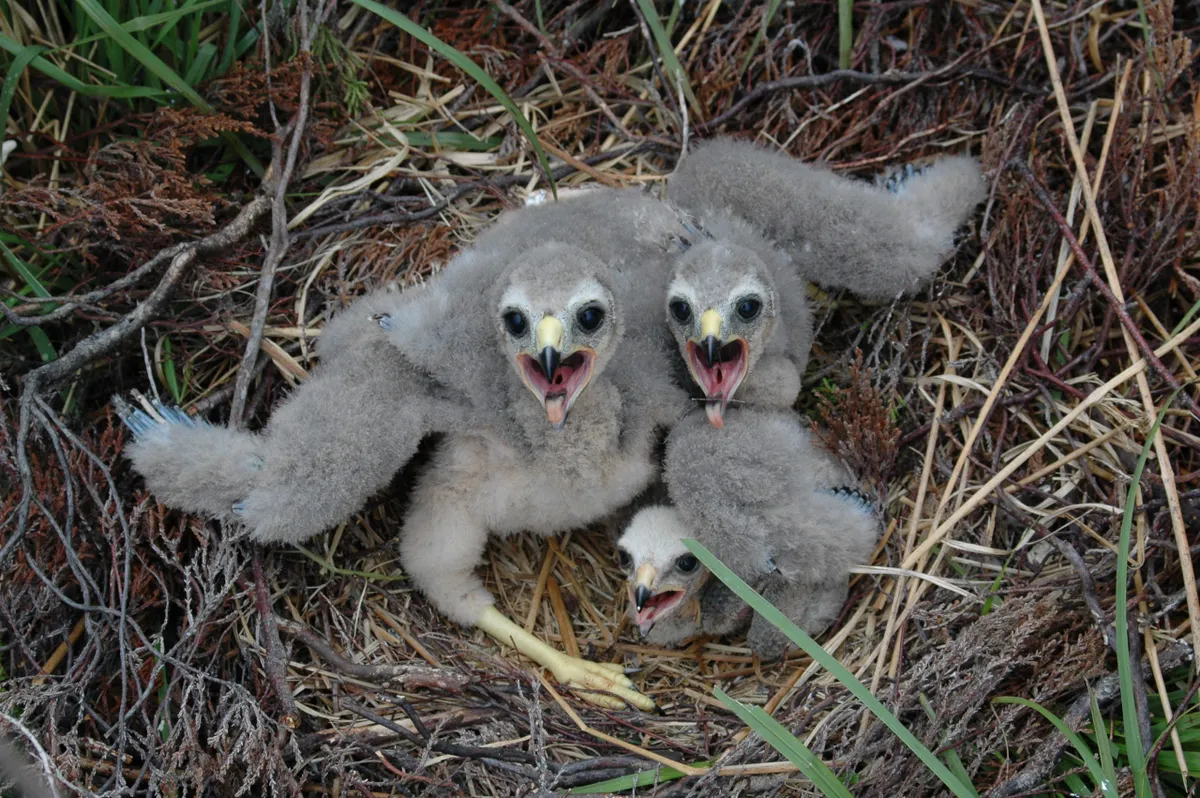
The three successful nests in 2018 were all on land owned by United Utilities, which has invested millions of pounds in carefully managing the fragile upland habitat to improve water quality, with beneficial spin-offs for wildlife.
“We’ve had a couple of really positive years and the Bowland population of hen harriers is looking slightly healthier,” says Forest of Bowland AONB manager Elliott Lorimer. “But another couple of bad years like 2015 could have a catastrophic impact on the local population. We are still a long way from being able to describe the future of the hen harrier in Bowland as secure.
“Sadly, raptor persecution continues to suppress hen harrier populations within the UK. The AONB Partnership is currently planning work with local police forces, as part of Operation Owl, to help raise awareness of this issue within local communities in Bowland and further afield within the counties of Lancashire and North Yorkshire.”
Bray adds: “It’s brilliant that we had three successful pairs this year, but it’s way too early for us to say with any confidence that this is the start of a recovery. We need several successive years of birds nesting successfully before we can say things are working as they should.”
One of the best ways to secure the continuing recovery of this seriously endangered species is to have more feet on the ground and eyes on the skies in the remote valleys of the Forest of Bowland, which is one of the most beautiful places in Britain to enjoy a spring walk.
Why is this species in the news?
Hen harriers are the rarest resident bird of prey in England with just six pairs recorded nesting in 2015 (up from a low point of 0 in 2013) – having been much more widespread in the past. A report by Natural England in 2008 declared that “very few nesting attempts are successful on grouse moors” and that “there is compelling evidence that persecution continues, both during and following the breeding season.” A report by the Joint Nature Conservation Committee in 2011 came to similar conclusions.
What is the evidence that persecution is to blame?
A number of studies (Etheridge et al. 1997; Potts 1998; Sim et al. 2007; Fielding et al.2011; Hayhow et al. 2013) have examined hen harrier breeding densities alongside traditional management of driven grouse moorland and other types of upland management and landscapes. These studies conclude that breeding densities and nesting success of hen harriers are lower in areas with a high proportion of grouse moor than in other areas.
Why are hen harriers seen as a problem by many of those managing grouse moors?
Once known for its skill in taking domestic chickens – hence its name – the hen harrier often preys on young grouse – wild game birds that gamekeepers protect and encourage for the sport of driven grouse shooting. The Joint Raptor Studies at the Langholm Estate in Dumfries and Galloway (1992-) http://www.langholmproject.com/ have found that “raptor predation at Langholm reduced autumn grouse abundance by 50%, leading to the cessation of driven grouse shooting”. Driven grouse shooting can be important for rural economies – the Game and Wildlife Conservation Trust (GWCT) says that driven grouse shooting “generates £100m for the UK economy, supports 2,500 jobs - and maintains our heather hills”.
Are hen harriers protected by law?
The hen harrier is listed on Annex 1 of the EC Birds Directive and is protected under Schedules 1 and 1A the Wildlife and Countryside Act 1981. This means that it is an offence to kill the birds or disturb their nests.
How do driven grouse shooting interests respond to allegations of persecution of hen harriers?
The grouse shooting industry acknowledges that some illegal persecution of raptors is carried out by ‘rogue’ gamekeepers. Organisations including the GWCT, The National Gaemkeepers Association (NGA) and British Association of Shooting and Conservation (BASC) have been vocal in condemning illegal persecution. However, advocates for driven grouse shooting also stress that grouse moor management is beneficial to many wild species and that there may be other factors involved in the decline of hen harriers.
What other factors can constrain hen harrier numbers?
Hen harriers nest on the ground so their eggs and young are vulnerable to foxes and badgers. Goshawks occasionally kill and eat hen harriers. Loss of habitat – for example when heather moorland is converted to forestry – will also impact on harrier numbers as will poor weather in the breeding season.
Can the conflict over hen harriers be resolved?
A plan has been developed by Defra in conjunction with the RSPB, Game and Wildlife Conservation Trust, Moorland Association, National Gamekeepers Organisation, National Parks UK. Natural England will lead on the plan, working with organisations to:
• Monitor hen harrier numbers in England and the UK via satellite tagging and tracking;
• Encourage the provision of alternative food sources for birds of prey;
• Monitor and protect nests and winter roosts from disturbance and destruction;
• Work with landowners to reintroduce hen harriers to suitable areas in the South of England;
• Scope out feasibility for trialling brood management (this would see young birds removed from nests in areas where harriers have reached agreed densities. The birds would be raised in captivity and released into the wild as adults.
RSPB Birdwatcher's Code
• Avoid going too close to birds or disturbing their habitats – if a bird flies away or makes repeated alarm calls, you’re too close. And if it leaves, you won’t get a good view.
• Stay on roads/paths where they exist and avoid disturbing habitats used by birds.
• Think about your fieldcraft. Disturbance is not just about going too close – a flock of birds on the foreshore can be disturbed from a mile away if you stand on the seawall.
• Playing a recording of calls to encourage a bird to respond can divert a territorial bird from other important duties. Never use birdsong to attract a species during breeding season.

